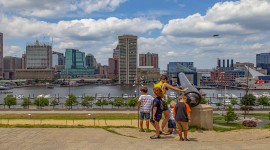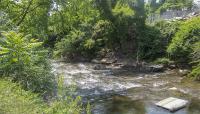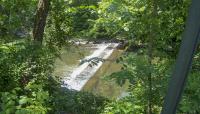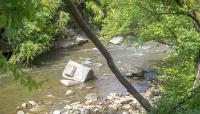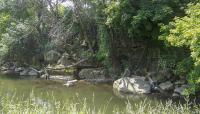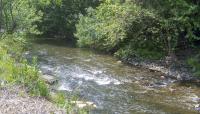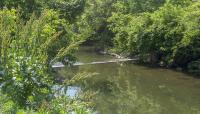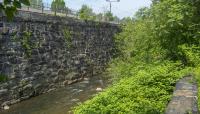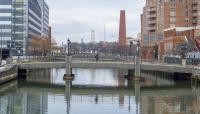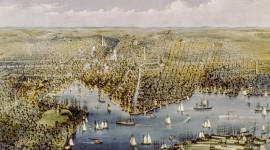Beginning as a small stream near Garrison, Maryland, and descending more than 250 feet over its course, Jones Falls runs nearly eighteen miles through the landscape before flowing into the Inner Harbor. Beginning in the eighteenth century, the river became an important link in the Atlantic trade network. Because of its central location near the port and the many mills it powered, this waterway played a pivotal role in Baltimore’s growth into a hub of industry. Maryland farmers used gristmills along the riverbank to have their grain milled into flour, which would then be sold in Baltimore’s harbor. The industrial character of Jones Falls was reinforced in the early nineteenth century when advances in manufacturing, particularly the invention of the power loom, enabled cotton fabric manufacturing at a much larger scale. In 1830 the Northern Central Railway was built along the western bank of Jones Falls, allowing even larger quantities of raw material and finished products to pass through the region. Neighborhoods along the river, such as Hampden and Woodberry, quickly grew as the mills attracted a diverse immigrant workforce. Flooding was common along Jones Falls due to the intense industrialization and channelizing of the watercourse, and in 1914 an underground conduit was constructed to direct water to the Inner Harbor. Industry in the region declined throughout the twentieth century, with occasional production booms during World Wars I and II. In the early 1960s the Jones Falls Expressway was built, its route along the Falls further isolating the watercourse from the city. While none of the Falls’ mills remain operational, renewed interest in the region’s industrial heritage has led to the adaptive reuse of many of the former mill structures. Efforts to restore the ecological conditions of the stream and reconnect it to other vibrant city landscapes are ongoing.
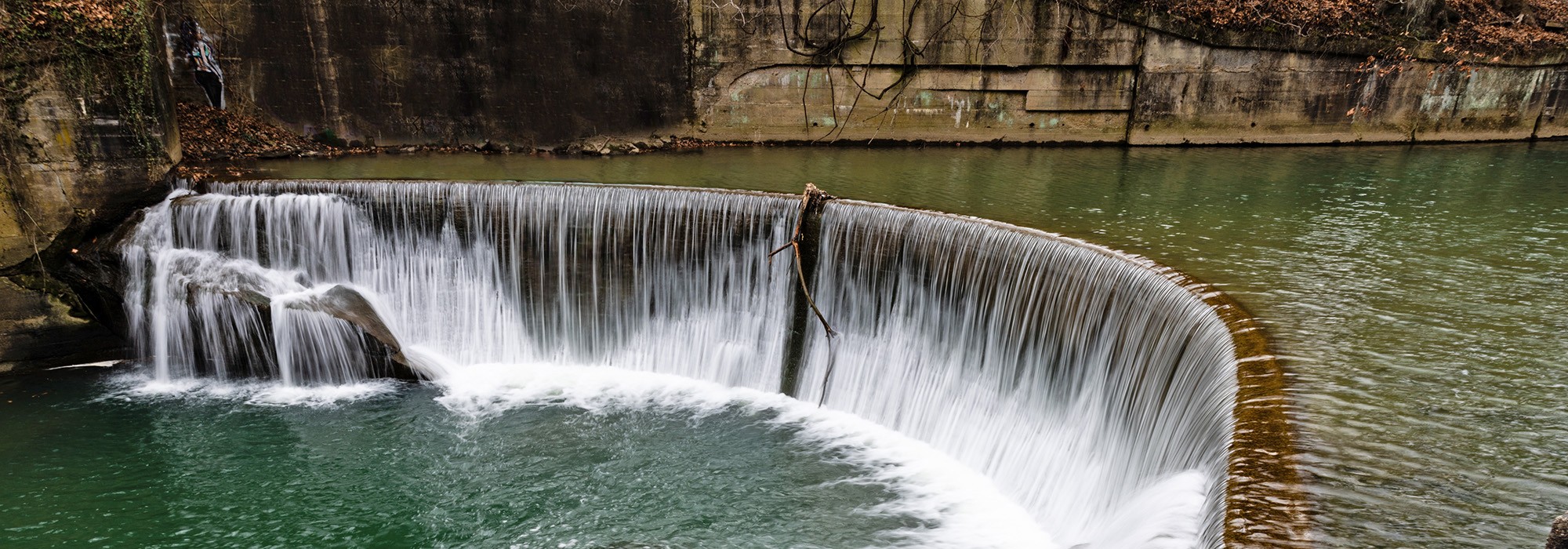
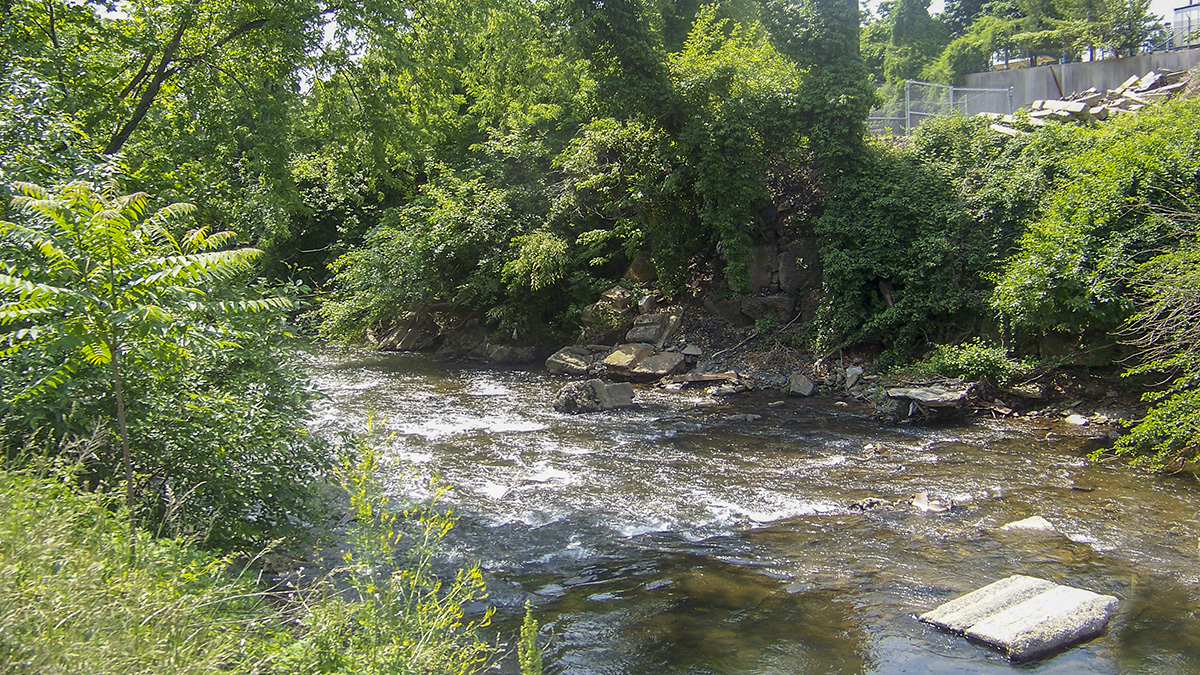
Baltimore,
MD
United States
Jones Falls
Location and Nearby Landscapes
Related Content
- Image
